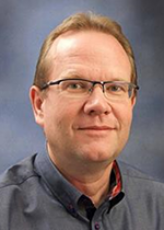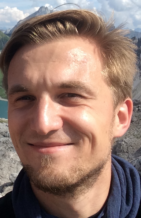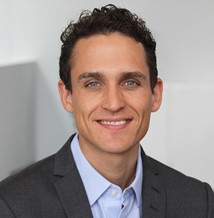IOMAC 2025 will host two pre-conference courses:
The courses are taking place at Inria (see venue) on May 20, 2025, 08:00-17:00, and will be executed in parallel. The course registration fee covers the attendance in both, to be chosen by the participant during registration. Participants can switch between courses on-site.
While both courses are aimed at OMA and system-id aficionados, the lecturing spirit and the given materials are fundamentally different, thus both are targeted towards a different audience. Please check the outlines below.
Course 1: Operational Modal Analysis: Background, Theory & Practice
DESCRIPTION
The course describes how Operational Modal Analysis (OMA) can advantageously be used instead of Experimental Modal Analysis (EMA) for accurate modal identification under actual operating conditions, and in situations where it is difficult or impossible to artificially excite the structure.
The course covers the theory and practice behind popular techniques developed for OMA, such as the Frequency Domain Decomposition (FDD) and the Stochastic Subspace Identification (SSI). Practical measurement techniques will be reviewed, both in case of well-separated modes, closely-spaced modes and with or without the presence of harmonic components. The OMA techniques will be illustrated by several application examples from civil engineering structures such as buildings and bridges, and mechanical engineering structures such as automotive, aerospace and space structures including both field and laboratory tests. An introduction to vibration-based Structural Health Monitoring (SHM) built on the Operational Modal Analysis framework will also be covered.
During the course there will be time for hands-on exercises using commercially available software.
WHO SHOULD ATTEND
Engineers and researchers who have basic knowledge of experimental modal analysis and who would like to expand their knowledge into the field of Operational Modal Analysis to perform modal analysis on structures under actual operating conditions, and in situations where it is difficult or impossible to artificially excite the structure. For example large civil engineering structures excited by wind and waves, or mechanical structures exhibiting self-generated vibration during operation.
Attendees are encouraged to bring their own laptops. None will be provided. Limited term licenses of OMA software will be provided.
COURSE OUTLINE
- Introduction to Operational Modal Analysis
- Basic idea and applications of OMA
- Advantages, assumptions and limitations
- Time data acquisition (measurement)
- Overview of identification techniques
- Comparison of OMA to EMA and ODS analysis
- Measurement and Measurement Validation
- Singular Value Decomposition (SVD) plots
- Short-Time Fourier Transform (STFT) contour plots
- Operational Modal Analysis Identification Techniques
- Projection channels
- Frequency Domain Decomposition techniques (FDD, EFDD, CFDD)
- State space models
- Stochastic Subspace Identification techniques (SSI-UPC, SSI-PC, SSI-CVA)
- Uncertainty estimation of modal parameters using SSI-UPCX
- Harmonic detection and reduction in the time and frequency domains
- Analysis validation
- Introduction to Structural Health Monitoring (SHM)
- Definitions, benefits, applications, and examples
- Theory: Vibration-based damage detection and damage detection residuals
INSTRUCTORS
 Carlos E. Ventura, University of British Columbia
Carlos E. Ventura, University of British Columbia
Prof. Ventura is a Civil Engineer with specializations in structural dynamics and earthquake engineering. He has been a faculty member of the Department of Civil Engineering at the University of British Columbia (UBC) in Canada since 1992. He is a registered professional engineer in British Columbia, California and Guatemala. He is currently the Director of the Earthquake Engineering Research Facility (EERF) at UBC, and is the author of more than 650 papers and reports on earthquake engineering, structural dynamics and modal testing. He is a member of several national and international professional societies and advisory committees. Prof. Ventura has conducted research for more than thirty-five years in the dynamic behaviour and analysis of structural systems subjected to extreme dynamic loads, including severe ground shaking. His research work includes experimental studies in the field and in the laboratory of structural systems and components.
 Niels-Jørgen Jacobsen, Hottinger Brüel & Kjær
Niels-Jørgen Jacobsen, Hottinger Brüel & Kjær
Mr. Jacobsen joined Brüel & Kjær (now Hottinger Brüel & Kjær (HBK)) in 1986 as a Digital Signal Processing software developer on analyzer systems. Later job positions include software project manager, application specialist, vibration group manager and product manager as which he is currently working with responsibility for HBK’s structural dynamics solutions. Mr. Jacobsen has worked intensively with both theoretical and practical aspects in the fields of structural dynamics, machine diagnostics and industrial acoustics. He has been the author of several technical papers and articles and is frequently lecturing worldwide. This includes giving lectures and courses on Operational Modal Analysis and Experimental Modal Analysis for more than twenty-five years. Mr. Jacobsen is a member of the IOMAC permanent and scientific committees.
Course 2: Advanced Methods for Vibration Analysis
DESCRIPTION
Dynamical models play a key role in many branches of science. In engineering they have a paramount role in health monitoring, control and optimization. Accurate and precise identification of the models is often crucial to their subsequent use in applications. Data-driven modeling (system identification) and uncertainty assessment are established fields for determining mathematical models of dynamical systems on the basis of measurement data from dedicated experiments.
In this preconference course we will cover the fundamentals of data-driven modeling approaches (ranging from subspace algorithms to Bayesian filters) as well as more advanced topics pertaining to uncertainty quantification in subspace identification, statistical change detection and probability of detection concepts in NDT and SHM.
Targeted applications are large engineering structures, such as, bridges, ships, wind turbines, and small-scale laboratory experiments. The sessions comprise theoretical input lectures and hands-on Matlab tutorials, based on simple mechanical systems.
WHO SHOULD ATTEND
PhD students, engineers, and researchers with basic knowledge of operational modal analysis who would like to expand their theoretical knowledge into the algorithms behind it. The course gives an overview of advanced methods for vibration analysis in the field, and helps understanding their mathematical background.
COURSE OUTLINE
- Welcome and introduction
- Overview on system identification methods
- Subspace-based system identification
- Uncertainty propagation for subspace methods
- Statistical change detection and probability of detection
- Bayesian filters for input-parameter-state estimation of linear systems
- Bayesian filters for parameter-state estimation of nonlinear systems
INSTRUCTORS
 Dr. Szymon Greś Aalborg University, Denmark |  Dr. Alexander Mendler Technical University of Munich, Germany |
